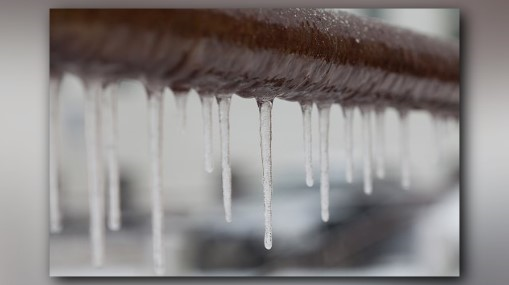Preventing Frozen Pipes in Cold Weather: Professional Strategies
Preventing Frozen Pipes in Cold Weather: Professional Strategies
Blog Article
The content which follows in relation to Helpful Tips to Prevent Frozen Pipes this Winter is definitely engaging. You should check it out.

Winter can wreak havoc on your pipes, particularly by freezing pipes. Below's how to stop it from occurring and what to do if it does.
Intro
As temperatures decrease, the risk of icy pipes rises, potentially leading to pricey repair services and water damage. Recognizing how to avoid frozen pipelines is crucial for homeowners in cold climates.
Understanding Icy Pipelines
What creates pipes to ice up?
Pipelines ice up when exposed to temperature levels listed below 32 ° F (0 ° C) for expanded durations. As water inside the pipelines freezes, it broadens, taxing the pipeline wall surfaces and potentially causing them to rupture.
Threats and problems
Frozen pipes can result in supply of water disruptions, residential or commercial property damage, and expensive repairs. Burst pipes can flood homes and trigger comprehensive architectural damages.
Indicators of Frozen Piping
Recognizing icy pipelines early can avoid them from rupturing.
Just how to determine icy pipelines
Search for decreased water flow from taps, unusual smells or sounds from pipelines, and visible frost on exposed pipes.
Avoidance Tips
Shielding vulnerable pipes
Wrap pipelines in insulation sleeves or use warm tape to protect them from freezing temperature levels. Focus on pipelines in unheated or exterior areas of the home.
Home heating techniques
Keep indoor rooms adequately heated, particularly areas with plumbing. Open cabinet doors to allow warm air to circulate around pipelines under sinks.
Protecting Outside Plumbing
Garden pipes and outside faucets
Disconnect and drain pipes yard hose pipes prior to winter months. Mount frost-proof faucets or cover outside taps with protected caps.
What to Do If Your Pipelines Freeze
Immediate actions to take
If you believe icy pipelines, maintain faucets available to soothe pressure as the ice thaws. Make use of a hairdryer or towels soaked in warm water to thaw pipes gradually.
Long-Term Solutions
Architectural modifications
Think about rerouting pipes away from outside walls or unheated locations. Include added insulation to attic rooms, cellars, and crawl spaces.
Updating insulation
Invest in top notch insulation for pipes, attic rooms, and walls. Correct insulation helps maintain consistent temperatures and decreases the danger of icy pipes.
Final thought
Avoiding icy pipelines requires aggressive procedures and quick responses. By comprehending the reasons, signs, and preventive measures, homeowners can safeguard their pipes throughout winter.
5 Ways to Prevent Frozen Pipes
Drain Outdoor Faucets and Disconnect Hoses
First, close the shut-off valve that controls the flow of water in the pipe to your outdoor faucet. Then, head outside to disconnect and drain your hose and open the outdoor faucet to allow the water to completely drain out of the line. Turn off the faucet when done. Finally, head back to the shut-off valve and drain the remaining water inside the pipe into a bucket or container. Additionally, if you have a home irrigation system, you should consider hiring an expert to clear the system of water each year.
Insulate Pipes
One of the best and most cost-effective methods for preventing frozen water pipes is to wrap your pipes with insulation. This is especially important for areas in your home that aren’t exposed to heat, such as an attic. We suggest using foam sleeves, which can typically be found at your local hardware store.
Keep Heat Running at 65
Your pipes are located inside your walls, and the temperature there is much colder than the rest of the house. To prevent your pipes from freezing, The Insurance Information Institute suggests that you keep your home heated to at least 65 degrees, even when traveling. You may want to invest in smart devices that can keep an eye on the temperature in your home while you’re away.
Leave Water Dripping
Moving water — even a small trickle — can prevent ice from forming inside your pipes. When freezing temps are imminent, start a drip of water from all faucets that serve exposed pipes. Leaving a few faucets running will also help relieve pressure inside the pipes and help prevent a rupture if the water inside freezes.
Open Cupboard Doors
Warm your kitchen and bathroom pipes by opening cupboards and vanities. You should also leave your interior doors ajar to help warm air circulate evenly throughout your home.

As a person who reads on How to prepare your home plumbing for winter weather, I think sharing that excerpt was beneficial. For those who enjoyed reading our blog post please don't forget to share it. We take joy in reading our article about Prevent Frozen Pipes .
Call Today Report this page